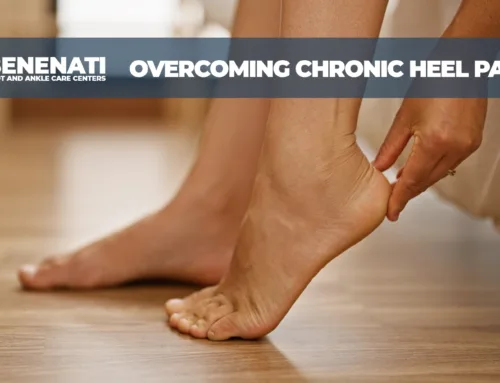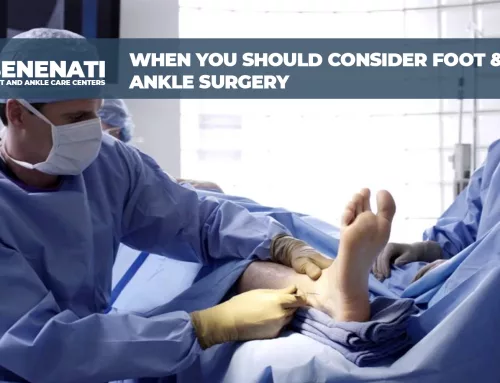Xanthomas of the Achilles Tendon
Xanthomas are cholesterol deposits that appear in the Achilles tendon. High cholesterol levels can cause the formation of these cholesterol deposits, which appear as small lumps. Aside from treating the underlying cholesterol problem, treatment for xanthomas may require taking a biopsy of the lesion but leaving the nodules intact.
Peroneal Tendon Dislocation/Dysfunction
Peroneal tendons are two tendons that support two important foot muscles (peroneus brevis and peroneus longus) that originate on the outside of the calves. These two muscles allow you to roll to the outside of the foot while standing.
Peroneal tendons are also called stirrup tendons because they help hold up the arch of the foot. The two muscles are held in place by a band of tissue, called the peroneal retinaculum. Injury to the retinaculum can cause this tissue to stretch or tear. When this happens, the peroneal tendons can dislocate from their groove on the back of the fibula. The tendons can be seen to roll over the outside of the fibula, which damages the tendons.
Skiing, football, basketball, and soccer are the most common sports activities leading to peroneal tendon dislocation. In some cases, ankle sprains have also caused this condition. Patients usually have to use crutches after such an injury, in order to allow the retinaculum tissue to heal and the tendons to move back to their natural position on the fibula. Sometimes a splint or compression bandage is applied to decrease swelling. Anti-inflammatory medications and ice are often part of the treatment. Note: Please consult your physician before taking any medications.
In moderate to severe cases of injury, when the peroneal retinaculum is torn or severely stretched and susceptible to dislocation, surgery may be required.
Achilles Tendonitis
The Achilles tendon is the largest tendon in the human body and can withstand forces of 1,000 pounds or more. It also is the most frequently ruptured tendon, usually as a result of a sports injury. Both professional and weekend athletes may suffer from Achilles tendonitis, a common overuse injury and inflammation of the tendon.
Events that can cause Achilles tendonitis may include:
- Hill running or stair climbing.
- Overuse, stemming from the natural lack of flexibility in the calf muscles.
- Rapidly increasing mileage or speed when walking, jogging, or running.
- Starting up too quickly after a layoff in exercise or sports activity, without adequately stretching and warming up the foot.
- Trauma caused by sudden and/or hard contraction of the calf muscles when putting out extra effort, such as in a sprint.
- Improper footwear and/or a tendency toward overpronation.
Achilles tendonitis often begins with mild pain after exercise or running that gradually worsens. Other symptoms include:
- Recurring localized pain, sometimes severe, along the tendon during or a few hours after running.
- Morning tenderness about an inch and a half above the point where the Achilles tendon is attached to the heel bone.
- Sluggishness in your leg.
- Mild or severe swelling.
- Stiffness that generally diminishes as the tendon warms up with use.
Treatment normally includes:
- A bandage specifically designed to restrict motion of the tendon.
- Taking nonsteroidal anti-inflammatory medication for a period of time. Note: Please consult your physician before taking any medication.
- Orthotics, which are corrective shoe inserts designed to help support the muscle and relieve stress on the tendon. Both nonprescription orthoses (such as a heel pads or over-the-counter shoe inserts) and prescribed custom orthotics may be recommended depending on the length and severity of the problem.
- Rest and switching to exercises that do not stress the tendon (such as swimming).
- Stretching and exercises to strengthen the weak muscle group in front of the leg, calf, and the upward foot flexors, as well as massage and ultrasound.
In extreme cases, surgery is performed to remove the fibrous tissue and repair any tears.





